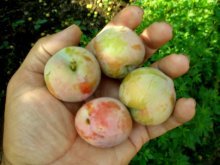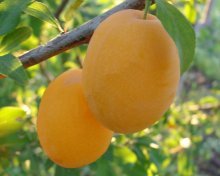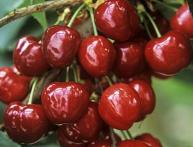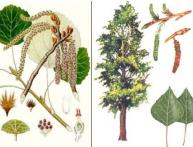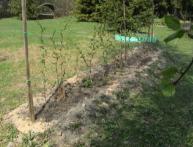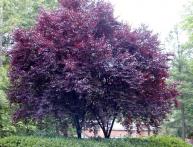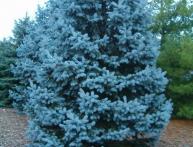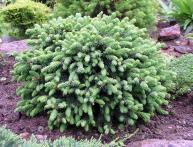Early-fruiting plum, description of the variety, planting and caring for early-fruiting plum
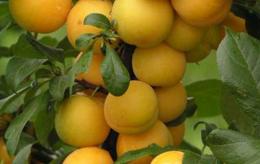
The genus Plum, from the Rosaceae family, unites about three hundred species. Modern taxonomists, in addition to plums, include bird cherry, cherry, peach, as well as cherries and almonds in this genus. The domestic plum, according to scientists, is the result of natural crossing of wild species of plums, including sloe and cherry plums. Hundreds of plum varieties are used in modern industrial and amateur gardening. Each of them, including the early-fruiting plum, has its own advantages.
Content:
- Description, advantages and disadvantages of early fruiting plum
- Where to plant self-fertile plum
- Planting a self-fertile plum and caring for it
Description, advantages and disadvantages of early fruiting plum
The variety was obtained as a result of work on the American plum Climax. Its flowers were pollinated with pollen from the Ussuri red plum. The authors of the variety are S.N. Satarova, Kh.K. Enikeev. The variety was tested in 1960. Since 1965, the variety has been recommended for cultivation in many regions, including the Central and Central Black Earth regions, Siberia, and the Far East.
Currently distributed almost everywhere. The variety is early, blooms in the first ten days of May, harvesting is mid-August. The variety is early fruiting. Fruiting begins in the third year. The tree lives and bears fruit for more than 20 years. Mature plants are medium or below average size. The crown is round, of medium density.The shoots are reddish.
The leaf blades are medium-sized, light green, without pubescence. The surface of the leaf blade is wavy, the edge with double teeth. Petioles plum leaves have medium length. Flower buds are located on bouquet branches, flowers are collected in threes. The fruits are medium in size, weighing from 20 to 28 grams. The appearance is very attractive.
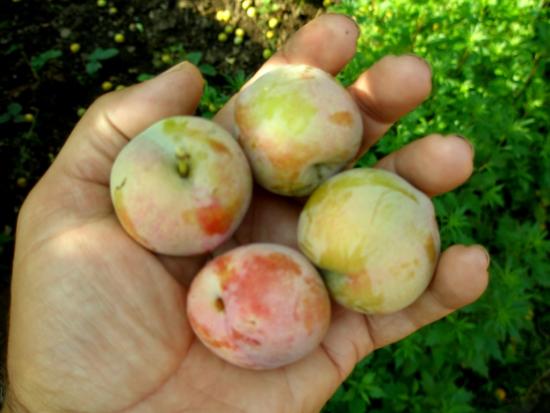
The main color is yellow, the outer color is red, sometimes it covers almost the entire fruit. During the period of plum ripening, the tree looks very elegant, since yellow, red and yellow-red fruits can be on the branches at the same time. The stalks are of medium length; when torn off, the surface of the plum remains dry. The skin is quite dense, durable, covered with a light waxy coating. The bone is large. Its weight can reach up to 4% of the total weight of the fetus.
Most often, the stone is either not separated from the pulp, or it is semi-separable. The texture of the pulp is tender, juicy, fine-fiber, yellow in color, the taste is good, most often sweet and sour. The purpose of the variety is dessert. The advantages of the variety include:
- productivity
- transportability
- drought resistance
- high, up to - 40, winter hardiness, including flower buds
Disadvantages include:
- crushing fruits when branches are overloaded
- bark damage due to sunburn
- every 2-3 years there is no yield
- self-sterility
For pollination you need plant hybrid cherry plum, plum variety Red Ball. Currently, the variety is quite in demand; it can be planted and grown even from a seed.
Where to plant self-fertile plum
Despite its endurance, for a self-fertile plum you still need to choose a place where the plant will be comfortable.
Lighting and soil
The self-fertile plum develops well in a sunny place; a site where there will be light shade for two to three hours in the first or second part of the day is also suitable. Do not place in low, dark places. Also, the plum will not have enough sunlight and moisture under the spreading crowns of tall trees. A favorable place for plum will be the upper part of a small slope facing south, with natural protection from the wind on the north side.
The self-fertile plum is demanding on the fertility and mechanical composition of the soil. It will grow best on sandy loamy fertile soils with good permeability.
Humidity
In general, plums tolerate short-term dry periods well, however, they require watering during a long absence of precipitation. Low places with clay soil and stagnant water are unsuitable for growing plum trees. The occurrence of groundwater above 1-2 meters is also contraindicated for this plant. Upon landing seedling For self-fertile plums, you also need to follow some rules.
Planting a self-fertile plum and caring for it
Landing
The best time for planting in the southern regions is autumn; in regions with a temperate climate, plums are planted in the spring. 12-14 days before planting, dig a hole up to 0.5 m deep and the same width. Part of the soil is mixed with 5-6 kg of humus, 15 g of potassium and phosphorus fertilizers are added and poured into the hole. If the land is very poor, the amount of fertilizer is increased by 50%.
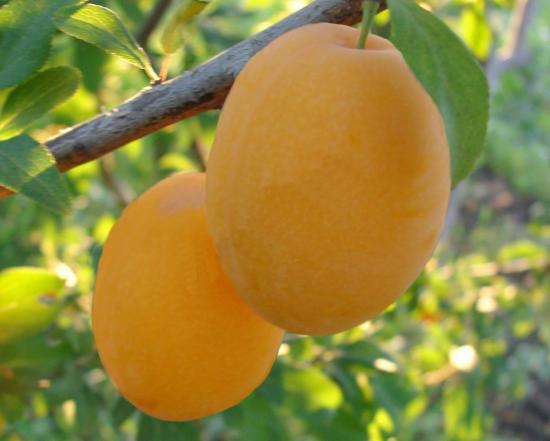
It is better to choose a seedling in a container or with a lump of earth. If the root system is open, then it needs to be inspected, the damaged parts should be cut off and dipped into a liquid mash with the addition of mullein and clay. After this, the tree is lowered into the hole, covered with soil, and lightly compacted.
Important! You cannot bury a self-fertile plum seedling into the ground. The root collar should be 4-5 cm above ground level. Immediately after planting, the plant is watered generously with 2-3 buckets of water. The ground around the trunk is mulched.
Care
In the first year after planting, the plant is watered regularly. The weeds underneath are removed and the soil is well loosened. In the future, the plum is watered only during prolonged drought. When a self-fertile plum begins to bear fruit, it needs pruning. This is done to ensure that the crown does not thicken excessively.
Thinning pruning is carried out annually in the spring. All branches that interfere with the passage of light deep into the crown are cut out.
Also in autumn and spring, sanitary pruning of broken, dry, damaged branches is carried out. Plum The self-fertile variety needs three to four feedings per season. At the beginning of May you need to feed the tree for the first time. Carry out the second feeding after 15 days. The plant is fed the third time in the second decade of June.
With the onset of July, feeding is stopped, otherwise it will provoke increased growth of shoots, the bark of which will not have time to ripen before winter, such shoots may freeze. For feeding, 60 - 90 g of ammonium nitrate are diluted in 10 liters of water. If there is no precipitation, then before and after applying fertilizer, the plant is watered every three days. After each watering, the soil is mulched. In all other respects, the self-fertile plum is cared for like any other fruit tree.
Video about large-fruited plum:

